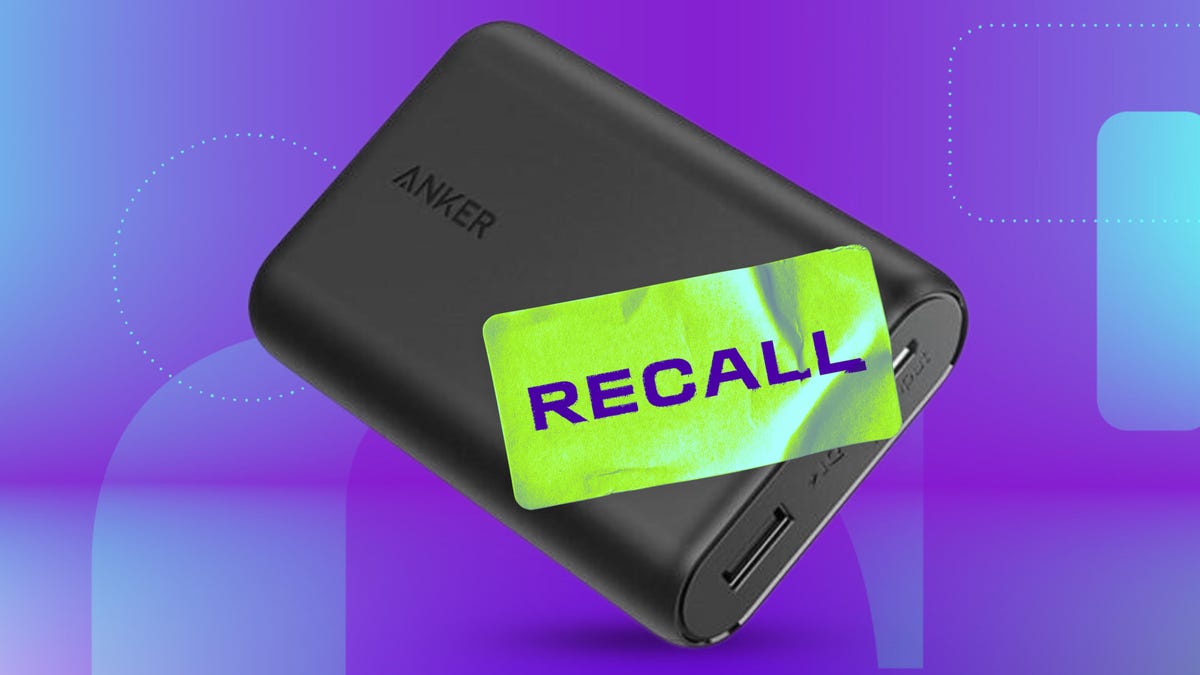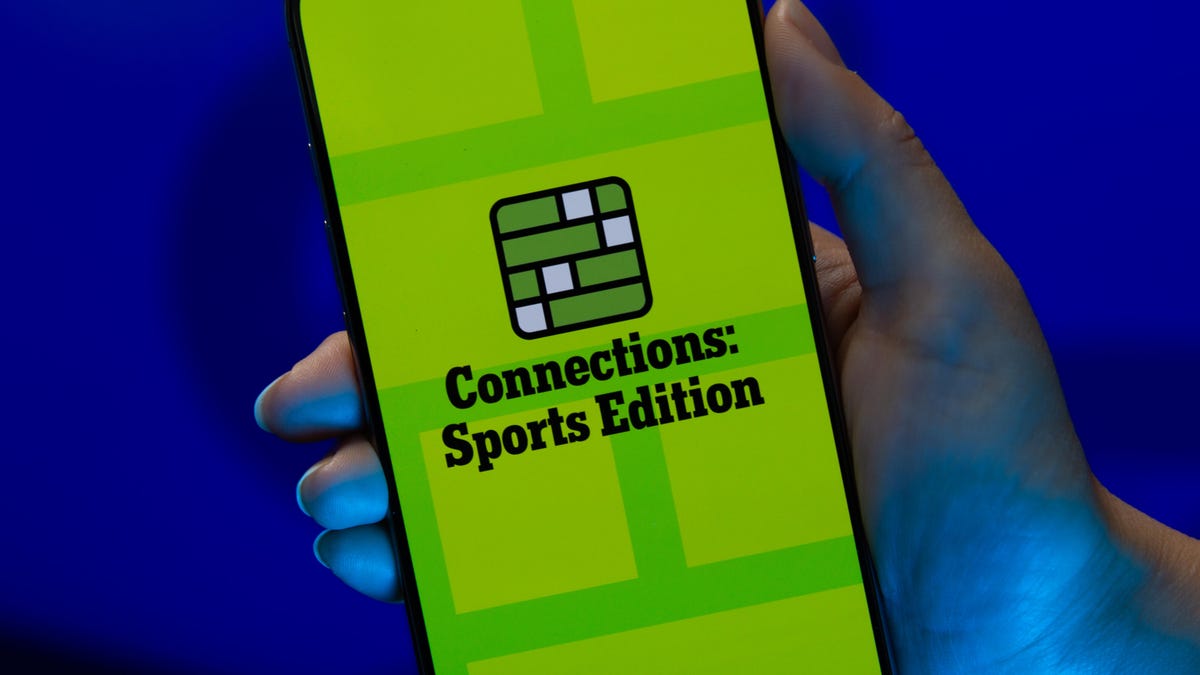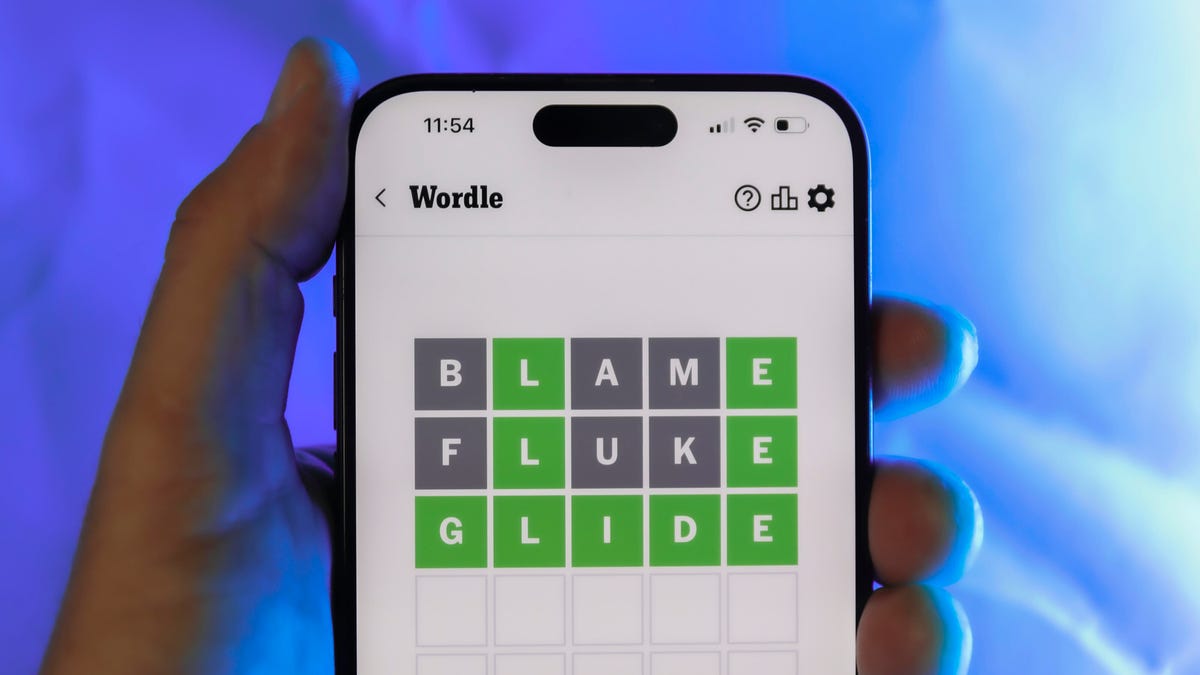Technologies
Anker Recalls 1.1 Million Power Banks for Fires and Explosions: What to Do if You’re Affected
The PowerCore 10000 is one of four current power bank recalls issued by Anker.

Electronics company Anker has announced an official recall of Anker PowerCore 10000 power banks with the model number A1263, following 19 reports of the portable chargers catching fire and exploding.
The Consumer Products Safety Commission reports that more than 1.1 million of the products sold in the US are affected by the recall. The company plans to replace the charging devices, but customers must submit photo evidence of ownership and also prove that they’ve disposed of the PowerCore devices properly.
The PowerCore, made in China, is now one of four current power bank recalls that have been issued by Anker. The others include the 334 MagGo 10K battery, the 321 Power Bank (5K) and the 535 Power Bank (20K). Other Anker models, including two of CNET’s top picks for portable chargers — Anker 523 PowerCore Slim 10K PD and Anker PowerCore III 10K — aren’t impacted by the recall.
Airlines have taken note of portable battery hazards. Recently, Southwest Airlines changed its policy on charging devices inside of carry-on bags. Some international airlines have also begun limiting the types of lithium chargers fliers can bring on planes due to risks of overheating.
How to check if your Anker PowerCore has been recalled
Anker says the products affected are the A1263 model of the PowerCore 10000 power bank that were purchased between June 1, 2016 and Dec. 31, 2022.
Customers can verify their serial number at a webpage provided by Anker. The serial number is on the bottom of the device.
In entering the number, Anker advises, «Pay attention to the letters and numbers in the serial number: ‘1’, ‘L’, ‘I’, ‘2’ and ‘Z’. Please note that characters such as ‘0 (zero)’ and ‘O’ (o) may be entered incorrectly. Regarding the serial number of the target product, ‘O’ and ‘I’ are not used.
What to do if your Anker PowerCore has been recalled
In addition to instructing customers to stop using the chargers immediately, the CPSC and Anker posted requirements for receiving a replacement PowerCore device.
They include:
- Submitting a photo of the recalled device that shows the model number, serial number, the consumer’s name, date of the photo and the word «recalled» written in permanent marker on the device. The information not on the device can be on a piece of paper next to the device in the photo.
- Submitting a purchase receipt, though the CPSC says that’s not a requirement for the recall.
- A confirmation of disposal of the device «in accordance with applicable laws and regulations.» Anker advises not disposing of the device until receiving confirmation that it’s eligible for the recall.
- From Anker: «If the serial number is worn off or not visible, please contact Anker for guidance.»
- Anker recommends contacting a local hazardous waste collection center versus disposing of it in the trash or through standard recycling services.
- For additional questions Anker says customers can email support@anker.com with «Anker A1263 Recall» in the subject line or call 800-988-7973.
Why portable chargers can be a travel hazard
The same reasons that portable charging banks are so easy to carry around are also part of why they can pose a problem. Most use lithium ion technology, which can be used to make battery-based products lighter and efficient, but is also susceptible to overheating or even fires if the batteries are damaged or have degraded.
It’s not unlike reports a decade ago of cheap batteries on hoverboards spontaneously combusting. Eventually, the products were banned on planes and in some cases, from being shipped.
«These products are typically unassuming, and are not something that the average consumer thinks can be potentially dangerous,» said Don Fountain, a civil trial attorney and the author of Defect Safety, a book about consumer safety and defective products. Fountain is currently representing a case involving portable batteries that does not involve Anker.
«My firm has handled fires and explosions caused by lithium batteries in a variety of products, including power tools, e-bikes, phones, scooters, children’s toys, battery packs and others,» Fountain said. «I would caution consumers to not store or use these products in a confined or unventilated area that could cause overheating and to not leave these products plugged into home electrical systems for extended periods of periods of time, such as overnight or when on vacation.»
Fountain said combusting batteries are especially dangerous in cargo holds or in the cabins of airplanes where it may be difficult to put out a fire.
The attorney said that in the case of Anker’s recall, customers don’t always keep their proof of purchase, though it’s not required in this case. However, he said, «It is unusual that proof of disposal is required for a recall payment or reimbursement.»
«Most people that have had an overheating event or a small fire will simply throw the unit away before ever thinking about contacting the manufacturer for a recall reimbursement,» Fountain said.
Technologies
Today’s NYT Mini Crossword Answers for Saturday, Dec. 27
Here are the answers for The New York Times Mini Crossword for Dec. 27.

Looking for the most recent Mini Crossword answer? Click here for today’s Mini Crossword hints, as well as our daily answers and hints for The New York Times Wordle, Strands, Connections and Connections: Sports Edition puzzles.
Need some help with today’s Mini Crossword? It’s pretty long for a Mini Crossword, and some of the clues are tricky. The answer to 10-Across is not an expression I use, for sure. Read on. And if you could use some hints and guidance for daily solving, check out our Mini Crossword tips.
If you’re looking for today’s Wordle, Connections, Connections: Sports Edition and Strands answers, you can visit CNET’s NYT puzzle hints page.
Read more: Tips and Tricks for Solving The New York Times Mini Crossword
Let’s get to those Mini Crossword clues and answers.
Mini across clues and answers
1A clue: Fashionable
Answer: HIP
4A clue: Product sold on «The Office»
Answer: PAPER
6A clue: One writing a performance review
Answer: MANAGER
8A clue: With 5-Down, redundant synonym of «outcome»
Answer: END
9A clue: Quiet ___ mouse
Answer: ASA
10A clue: Gives constant compliments, in slang
Answer: GASESUP
12A clue: Ski mountain bump
Answer: MOGUL
13A clue: Uneasy feeling
Answer: ANGST
Mini down clues and answers
1D clue: Personally involved
Answer: HANDSON
2D clue: Hoppy beer, for short
Answer: IPA
3D clue: Mythical horse whose name is an anagram of 10-Across
Answer: PEGASUS
4D clue: Last word in the palindromic sentence «A man, a plan, a canal …»
Answer: PANAMA
5D clue: See 8-Across
Answer: RESULT
6D clue: Ryan of «When Harry Met Sally …»
Answer: MEG
7D clue: Genre for Playboi Carti and Cardi B
Answer: RAP
11D clue: Something in an Easter basket
Answer: EGG
Don’t miss any of our unbiased tech content and lab-based reviews. Add CNET as a preferred Google source.
Technologies
Today’s NYT Connections: Sports Edition Hints and Answers for Dec. 27, #460
Here are hints and the answers for the NYT Connections: Sports Edition puzzle for Dec. 27, No. 460.

Looking for the most recent regular Connections answers? Click here for today’s Connections hints, as well as our daily answers and hints for The New York Times Mini Crossword, Wordle and Strands puzzles.
Today’s Connections: Sports Edition is a real challenge. That purple category wants you to hunt out something related in four different words, and it’s a toughie. If you’re struggling with today’s puzzle but still want to solve it, read on for hints and the answers.
Connections: Sports Edition is published by The Athletic, the subscription-based sports journalism site owned by The Times. It doesn’t appear in the NYT Games app, but it does in The Athletic’s own app. Or you can play it for free online.
Read more: NYT Connections: Sports Edition Puzzle Comes Out of Beta
Hints for today’s Connections: Sports Edition groups
Here are four hints for the groupings in today’s Connections: Sports Edition puzzle, ranked from the easiest yellow group to the tough (and sometimes bizarre) purple group.
Yellow group hint: Something you save.
Green group hint: An Olympic sport.
Blue group hint: Toronto pitchers.
Purple group hint: Think about the alphabet and look for something hidden.
Answers for today’s Connections: Sports Edition groups
Yellow group: Memento.
Green group: Types of wrestling.
Blue group: Blue Jays to win Cy Young Award.
Purple group: Ends in a homophone for a letter of the alphabet.
Read more: Wordle Cheat Sheet: Here Are the Most Popular Letters Used in English Words
What are today’s Connections: Sports Edition answers?
The yellow words in today’s Connections
The theme is memento. The four answers are collectible, keepsake, memorabilia and souvenir.
The green words in today’s Connections
The theme is types of wrestling. The four answers are arm, freestyle, Greco-Roman and sumo.
The blue words in today’s Connections
The theme is Blue Jays to win Cy Young Award. The four answers are Clemens, Halladay, Hentgen and Ray.
The purple words in today’s Connections
The theme is ends in a homophone for a letter of the alphabet. The four answers are batter’s eye (I), blue jay (J), golf tee (T) and pool cue (Q).
Don’t miss any of our unbiased tech content and lab-based reviews. Add CNET as a preferred Google source.
Technologies
Today’s Wordle Hints, Answer and Help for Dec. 27, #1,652
Here are hints and the answer for today’s Wordle for Dec. 27, No. 1,652.

Looking for the most recent Wordle answer? Click here for today’s Wordle hints, as well as our daily answers and hints for The New York Times Mini Crossword, Connections, Connections: Sports Edition and Strands puzzles.
Today’s Wordle puzzle came together pretty quickly for me this time. If you need a new starter word, check out our list of which letters show up the most in English words. If you need hints and the answer, read on.
Read more: New Study Reveals Wordle’s Top 10 Toughest Words of 2025
Today’s Wordle hints
Before we show you today’s Wordle answer, we’ll give you some hints. If you don’t want a spoiler, look away now.
Wordle hint No. 1: Repeats
Today’s Wordle answer has no repeated letters.
Wordle hint No. 2: Vowels
Today’s Wordle answer has one vowel.
Wordle hint No. 3: First letter
Today’s Wordle answer begins with B.
Wordle hint No. 4: Last letter
Today’s Wordle answer ends with H.
Wordle hint No. 5: Meaning
Today’s Wordle answer can refer to a quantity of goods produced at one time.
TODAY’S WORDLE ANSWER
Today’s Wordle answer is BATCH.
Yesterday’s Wordle answer
Yesterday’s Wordle answer, Dec. 26, No. 1651 was SPEED.
Recent Wordle answers
Dec. 22, No. 1647: CONCH
Dec. 23, No. 1648: GLINT
Dec. 24, No. 1649: SPOOL
Dec. 25, No. 1650: PRISM
Don’t miss any of our unbiased tech content and lab-based reviews. Add CNET as a preferred Google source.
-

 Technologies3 года ago
Technologies3 года agoTech Companies Need to Be Held Accountable for Security, Experts Say
-

 Technologies3 года ago
Technologies3 года agoBest Handheld Game Console in 2023
-

 Technologies3 года ago
Technologies3 года agoTighten Up Your VR Game With the Best Head Straps for Quest 2
-

 Technologies4 года ago
Technologies4 года agoBlack Friday 2021: The best deals on TVs, headphones, kitchenware, and more
-

 Technologies4 года ago
Technologies4 года agoVerum, Wickr and Threema: next generation secured messengers
-

 Technologies4 года ago
Technologies4 года agoGoogle to require vaccinations as Silicon Valley rethinks return-to-office policies
-

 Technologies4 года ago
Technologies4 года agoOlivia Harlan Dekker for Verum Messenger
-

 Technologies4 года ago
Technologies4 года agoiPhone 13 event: How to watch Apple’s big announcement tomorrow
